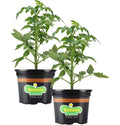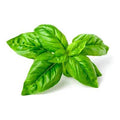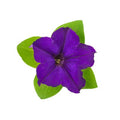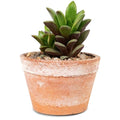If you love sweet, earthy beets, it's time to grow your own. A dual-purpose vegetable, beets taste delicious whether you're eating the greens in a salad or roasting the roots for a main dish. Plus, beets make a terrific garden addition, thriving in the cool temperatures of spring and fall when you're longing for fresh, homegrown flavors but it's grown too chilly for summer crops, like tomatoes. They're a terrific choice for succession planting (staggering your plantings so they mature at different times), too, because beets mature quickly. High in fiber and rich in vitamins A and C, beet greens contain more iron than many other veggies and turn a boring salad into a delicious, nutrient-packed treat. The roots, of course, can be enjoyed raw or cooked, in many different, tasty ways. With this kind of versatility, beets are definitely worth growing in your garden!
Quick Answers About Growing Beets
- When should I plant beets? Plant in early spring (as soon as soil can be worked) or late summer for a fall harvest.
- Do beets need full sun? Roots develop best in full sun; greens tolerate partial shade.
- How far apart should I space beets? Space plants about 3 to 5 inches apart (variety-dependent).
- How much water do beets need? About 1 inch per week; water when the top inch of soil is dry.
- Can I harvest beet greens early? Yes—snip 2 to 3 leaves per plant at a time so roots can keep forming.
Quick Guide to Growing Beets
Purchase Bonnie Plants® Better Than Schrute's Baby Beets, part of the Foodie Fresh line (available exclusively from Lowe's). You can find a retailer in your area here.
- Plant beets a few weeks prior to your last frost for a late spring/early summer harvest. You can also grow them again in the fall.
- Space beets 3 to 4 inches apart. Beet greens grow well in partial shade, but the roots need full sun to develop properly.
- Mix compost or other organic matter into the soil when planting. Beets need loamy, loose soil free from rocks for best root development.
- Water immediately after planting, then give plants 1 inch of water per week.
- Mix a continuous-release fertilizer into the soil at planting time and replenish as directed during the growing season.
- Spread mulch (such as chopped leaves or straw) around the plants to keep the soil moist.
- Harvest beets when you begin seeing the shoulders emerge from the soil. Beets can be harvested young or allowed to fully mature. Harvest spring-planted beets before the soil gets too warm and fall beets before the ground freezes.
- If you want to harvest beet greens prior to the roots maturing, snip two or three leaves from the plant. Remember, the beet root needs leaves so it can fully form, so don't harvest all of the leaves.
- Enjoy beets fresh, steamed, or roasted. Use the greens in salads, stir-fries, and smoothies. Add cooked, pureed beets to chocolate cake for extra vitamins and moistness. Preserve beets by freezing, canning, or pickling.
- Store beets in the refrigerator for 2 weeks or a cool root cellar for 2 to 3 months. Beet greens should be used quickly but will store in the refrigerator for a few days.
Soil, Planting, and Care
Beets belong to the Amaranthaceae family, which includes Swiss chard. In fact, beet greens and Swiss chard can be used similarly in recipes.
While we typically think of beets as grown for their roots, beet greens pack a powerhouse of nutrition into meals, rivaling spinach for the amount of iron they contain. Plus, there are many colors and cultivars of beets available, including red, golden yellow, white, and even pretty white and red ringed roots.
Beets grow best in cool weather, so plant them in early spring (as soon as you can work the soil) or late summer/early fall to harvest before the ground freezes. For a delicious early beet harvest, choose Bonnie Plants® Better Than Schrute's Baby Beets (available as exclusively at Lowe's), a petite beet that matures to its full size in about 40 days. With more than 100 years of experience producing strong, vigorous plants for home gardeners, you can be sure your Bonnie Plants will thrive in their new home in your garden.
As with all veggie gardens, beets need good soil for a great harvest. Make sure to remove all rocks and roots where you plan to plant beets so they can grow without obstruction. Beets prefer loamy soil with a neutral to slightly acidic pH that's not too high in nitrogen, but they do appreciate plenty of potassium and phosphate to develop healthy roots. If you plan to plant beets in-ground, give your plants a great start by adding aged compost-enriched Miracle-Gro Organic™ Garden Soil to the garden bed. Organic matter helps retain moisture in the soil while also improving drainage, which is especially important when dealing with clay soil.
Beets grow well in raised beds and containers, too. Choose a container that's about 12 inches deep if you're planting beet varieties with large roots. A variety like Better Than Schrute's Baby Beets will form roots only about 2 inches in diameter at maturity, so you can choose a container or use a raised bed that's shallower than needed for larger beet varieties. When planting in pots, fill them with a light, premium potting mix like Miracle-Gro Organic™ Outdoor Potting Mix. For raised beds, use Miracle-Gro Organic™ Raised Bed & Garden Soil, which provides excellent drainage and important nutrients to promote strong root development.
Now, it's time to plant. Dig a hole, gently remove the plant from the pot, and place it in the hole so the top of the root ball is at the same level as the surrounding soil. Fill in the rest of the hole with more soil, pressingly firmly but gently around the base of the plant. Space beets 3 to 5 inches apart, depending on the variety (bigger beets need more space). Water thoroughly to settle the plants and remove air pockets in the soil. Add a layer of mulch around the base of the plants to help prevent weeds and retain soil moisture. Mulch also helps protect beets from sudden hot spells by regulating the soil temperature and slow moisture evaporation.
Beets need about an inch of water per week. Stick your finger in the soil near the plants (without disturbing the developing roots) to see if you need to water. You only need to water your beets if the top inch of soil is dry.
To create healthy roots, it's important to feed your plants regularly. In garden beds, use a continuous release fertilizer designed for vegetables, such as Miracle-Gro Organic™ Planting Tablets. For container-grown beets, use a water-soluble fertilizer like Miracle-Gro Organic™ Liquid Plant Food once a week while you water.
Succession plant beets (meaning plant a new round of beets) every 2 or 3 weeks for a long harvest. Beets tolerate light frost without harming the greens, but harvest the crop before freezing temperatures arrive for good.
Troubleshooting
While beets are fairly trouble-free, you'll want to watch out for a few pests. Flea beetles and leafhoppers both enjoy the taste of beets. If you see these pests on the leaves, a strong spray of water will usually help remove them. Beet leaf miners hide in the foliage. Feel the leaves for "bumps" with your fingers, then squish the pests. Be sure to remove any damaged leaves. Adding a light-weight row cover over the plants helps protect them from pests.
Leaf spot and mosaic virus can also affect beets, as can "black heart," a condition in which black, hard spots develop on the beet flesh. Black heart is caused by a boron deficiency. Add compost to the soil or use Miracle-Gro Organic™. To help prevent other diseases, practice good garden hygiene. Clean up debris each season and make sure your plants are spaced properly so there's excellent air flow. Rotate crops of beets and Swiss chard with other vegetable families to avoid diseases that might remain in the soil from the previous season.
Beets prefer low nitrogen—otherwise you'll have lots of greens but tiny roots. Remove any weeds carefully, as beets have shallow roots which should be left undisturbed to develop well. Also, remember to remove any rocks or roots in your garden bed before planting beets so the roots can form properly.
Carefully time the planting of spring-grown beets, as they may bolt (meaning the plant starts to focus its energy on flowering instead of growing) in warm temperatures. When this happens, roots tend to become woody.
Harvest and Storage
Beets may seem challenging to harvest. How can you tell that they're ready? As the veggies mature, you'll begin to see the shoulders emerge from the soil. Beets can be harvested young or full-sized, depending on your preference. Better Than Schrute's Baby Beets are mature and ready for harvest about 40 days after planting, much earlier than many other varieties, which usually take between 55 and 70 days to mature.
Harvest beet greens at any stage, but remember to only harvest 2 to 3 leaves per plant, keeping some leaves intact so the root will continue to develop. Younger leaves are more tender, while those longer than 6 inches can be tough.
To harvest beets, loosen the soil around the root with a trowel, then gently pull the beet from the ground.
Beets store well in the refrigerator for about 14 days. Remove the green tops to prevent moisture loss (but leave an inch of the stem intact), rinse and dry the roots, and store in an airtight plastic bag in the refrigerator. Store beet greens separately. Beet greens should last for about 3 days.
For longer lasting beets, store in a cool root cellar. Brush off the soil on the roots and remove the greens, leaving two inches of the stem intact. Store the beets surrounded by sand or sawdust, placing them in layers so they're not touching. (For other longer-term storage ideas, check out How to Store Veggies Without a Root Cellar.) Beets can last up 2 to 3 months, but discard any if they begin sprouting or become soft.
Beets can also be preserved by canning, freezing, and pickling. Pick the method that's easiest for you.
How to Use Beets
Beets taste delicious raw, braised, roasted, stir-fried, and even added to soup. The greens make an excellent addition to salads, steamed with a bit of butter, or used in a quiche. If you're boiling beets, leave 1 inch of the stem and the root end intact to keep beets from "bleeding" into the cooking water. Boil until fork-tender, allow to cool, and then slip off the skins.
NOTE: Red and pink beets can stain your hands and counters. Consider working on waxed paper and wearing gloves to avoid a mess.
If your family balks at eating beets, add cooked, pureed beets to chocolate cake or brownie batter. The beets make cakes and baked goods extra moist and a little healthier—and your family will never know!





 Herbs
Herbs
 Vegetables
Vegetables
 Fruit
Fruit
 Flowers
Flowers
 Succulents
Succulents


